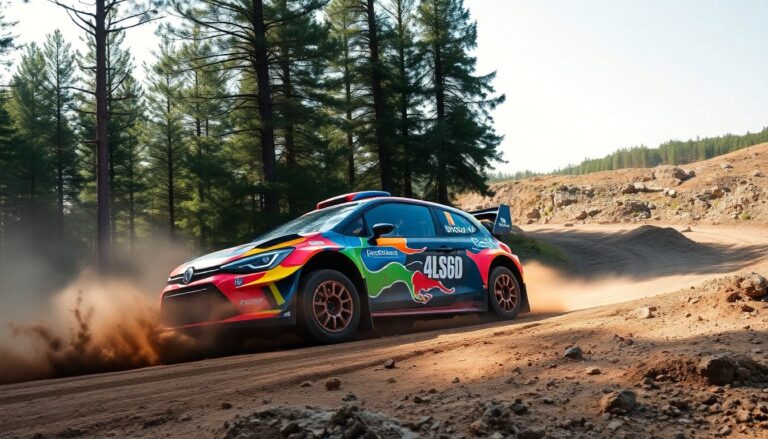Argomenti trattati
Rallying transcends the realm of motorsport, representing a dynamic combination of speed, precision, and strategy. Unlike traditional circuit racing, where competitors race on closed tracks, rally drivers navigate a variety of public and private roads. These courses range from smooth tarmac to rugged dirt paths, contributing to the unpredictable and exhilarating nature of the sport.
The core of rallying lies in its distinctive format, where teams of drivers and co-drivers collaborate to tackle challenging stages against the clock. This article explores the essential elements that render rally racing an engaging sport, including its historical development, the vehicles utilized, and the strategies implemented by competitors.
History of rally racing
The origins of rally racing date back to the early 20th century, with notable events such as the Monte Carlo Rally, first held in 1911. Originally, these rallies functioned as endurance tests for vehicles, demonstrating their durability and performance across various terrains. Over the years, rallying has transformed into a competitive sport, marked by the establishment of organized competitions and championship series.
During the 1970s and 1980s, Group B rallying reached unprecedented heights, known for its powerful, turbocharged vehicles and exhilarating speeds. However, safety concerns led to the eventual ban of this class. Today, the World Rally Championship (WRC) stands as the premier series, featuring manufacturers like Ford, Hyundai, and Toyota, who compete in events held around the world.
The vehicles and technology behind rallying
Rally cars are engineered to excel in the varied conditions encountered during competitions. These vehicles are crafted to be lightweight and powerful, featuring advanced technologies that enhance overall performance. While most rally cars are based on production models, they undergo significant modifications to comply with safety and performance regulations.
Key features of rally vehicles
A notable characteristic of rally cars is their all-wheel-drive systems. This technology ensures improved traction and stability, enabling drivers to effectively navigate challenging terrains, including mud, snow, and gravel. Furthermore, rally cars incorporate roll cages to enhance safety, providing crucial protection for drivers in the event of an accident.
Additionally, the implementation of suspension systems that effectively absorb shocks from uneven surfaces enables drivers to achieve higher speeds while maintaining control. This combination of speed and agility contributes to the excitement of rally racing, where competitors race against the clock while navigating unpredictable conditions.
Strategies for success in rallying
Achieving success in rally racing goes beyond mere driving skill; it demands a comprehensive understanding of strategy and teamwork. The dynamic between the driver and co-driver is vital, as the co-driver navigates the course and relays crucial information regarding upcoming turns and obstacles.
The role of the co-driver
The role of the co-driver is crucial in rally racing, primarily involving the interpretation of pace notes. These notes are pre-written details that outline the characteristics of the upcoming course. They provide essential information about the type of turn, the condition of the road surface, and any potential hazards. A skilled co-driver can greatly improve a team’s performance by keeping the driver informed and enabling quick reactions to changing conditions.
In addition to pace notes, rally teams must carefully plan their strategy for each stage. Key factors such as tire selection, fuel management, and vehicle setup significantly influence a team’s success. By understanding the specific challenges of each stage, teams can make educated decisions that could determine the outcome of the race.
The future of rally racing
The future of rally racing
As technology continues to advance, the future of rally racing holds considerable promise. Innovations in electric vehicles and hybrid technologies are making their way into the sport, presenting new challenges and opportunities. The integration of advanced telemetry systems enables teams to analyze performance data in real time, thereby enhancing their ability to make strategic decisions.
Sustainability initiatives
Additionally, initiatives aimed at increasing sustainability within the sport are gaining momentum. As rallying adapts to the evolving automotive landscape, it remains a thrilling spectacle that engages fans globally.
Evolution of rallying
Rally racing is a multifaceted sport that uniquely combines speed, skill, and strategy. With its rich history and the advanced technology powering its vehicles, rallying continues to evolve and captivate, ensuring its enduring appeal among motorsport enthusiasts.

